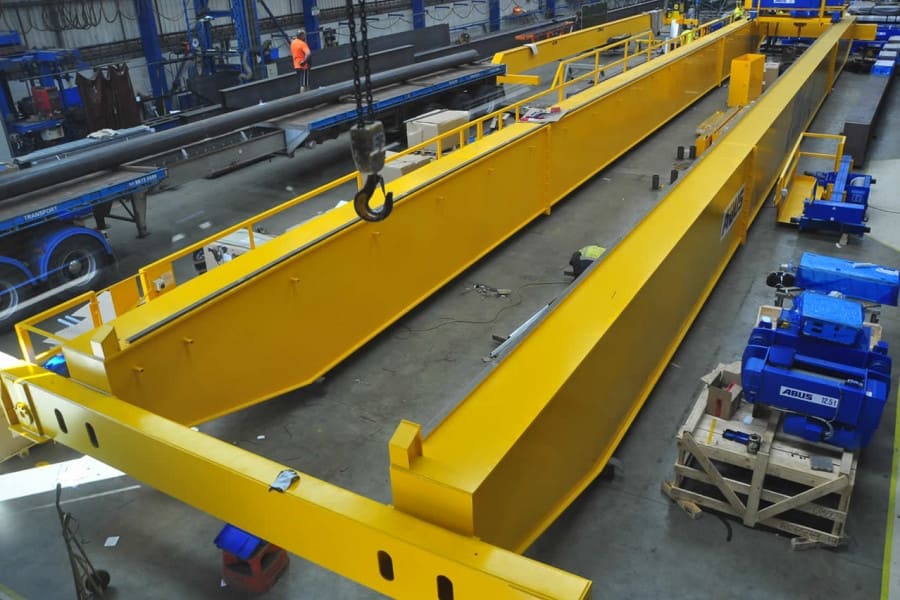When using an electric overhead traveling crane (EOT crane), it is important to follow certain precautions to ensure safe and efficient operation. Here are some key precautions to consider:

Operator Training: Only trained and authorized personnel should operate the EOT crane. Operators should be familiar with the crane’s controls, safety features, and operating procedures. Proper training helps prevent accidents and ensures the crane is used correctly.
Pre-Use Inspection: Before each use, conduct a thorough inspection of the EOT crane. Check for any signs of damage, loose components, or abnormal sounds. Ensure that all safety devices, such as limit switches and emergency stop buttons, are working correctly.
Weight Capacity: Do not exceed the crane’s rated weight capacity. Overloading the crane can lead to structural failure, accidents, and injuries. Always verify the weight of the load being lifted and ensure it is within the crane’s capacity.
Clear Pathways: Ensure that the area beneath the EOT crane is clear of personnel and obstacles before moving or lowering the load. Preventing collisions and obstructions helps maintain a safe working environment.
Slinging and Rigging: Properly sling and rig the load to prevent it from slipping or falling during lifting and movement. Use appropriate lifting devices, such as hooks, slings, and chains, and follow the manufacturer’s guidelines for safe rigging practices.
Communication: Establish clear communication between the crane operator and other personnel involved in the lifting operation. Use hand signals, radios, or other communication devices to ensure everyone understands instructions and can respond appropriately.
Clear Visibility: The crane operator should have a clear view of the load, the lifting area, and the surrounding environment. Clear any obstructions or blind spots that may hinder visibility and use additional aids like mirrors or cameras if necessary.
Secure Traveling: Ensure that the load is stable and properly secured before moving the EOT crane. Sudden movements or swinging loads can cause accidents or damage to the crane and surrounding structures.
Proper Speed Control: Use appropriate speed settings when operating the EOT crane. Avoid abrupt starts, stops, or excessive speeds, which can cause load swinging, structural stress, or loss of control.
Maintenance and Inspections: Regularly inspect and maintain the EOT crane according to the manufacturer’s recommendations. This includes lubrication, checking electrical connections, and verifying the condition of wires, cables, and hoist mechanisms. Promptly address any identified issues or faults.
Emergency Procedures: Familiarize yourself with the emergency procedures specific to the EOT crane and the facility. Know how to safely stop the crane in case of an emergency and understand evacuation protocols.
By following these precautions and adhering to safe operating practices, you can help ensure the safe and efficient use of an electric overhead traveling crane.




















